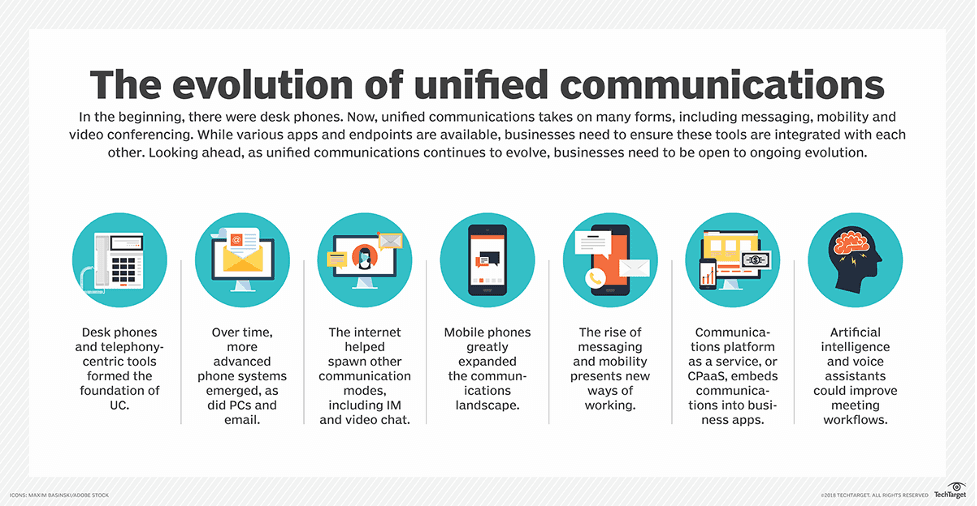Do you wish there was a more efficient way to streamline your business processes? Well, you're not alone, and the answer may lie in application integration. But with so many different applications and systems in use, integrating them can be a challenge. This is where RTC development comes in. By leveraging this technology, businesses can create real-time connections between their applications, allowing for faster and more efficient data transfer.
This article will explore the modern-day use cases of RTC in apps and how it is transforming industries worldwide.
What is RTC and How Does it Work
Real-time communication technology is a type of technology that enables instantaneous interactions between individuals or machines, regardless of location. This technology has changed the way we interact with one another, as it allows us to communicate in real-time without the need for any delays or latency.
To understand how RTC technology works, it is essential first to understand the underlying principles that govern its operation. At the heart of this technology is packet-switching - a data transfer process over a network in discrete chunks called Packets. The data is divided into little, variable-length units with the aim of transporting files quickly and effectively over networks while minimizing transmission latency. These little components belong to the same file and must be put back together at the destination.
In an RTC system, data is transmitted at high speeds and with minimal latency or delay. This is achieved through several different technologies, including high-speed networks, specialized protocols, and dedicated hardware.
The key features of RTC technology in apps include
- the ability to enable high-quality audio and video transmissions
- support of real-time collaboration and interaction between individuals, regardless of their location or device
- ability to work on multiple platforms, ensuring seamless communication across devices, including smartphones, tablets, and desktops.
- scalability and can support of a large number of users without compromising on the quality of communication
- advanced end-to-end encryption protocols that protect data and ensure confidentiality
- no need for additional software or hardware installation, making it easy to access and use RTC technology without any difficulty.
What Advantages It Brings
RTC has been widely adopted in various business settings for its numerous advantages. This section will list and describe some of its benefits.
- Faster Feedback and Decision Making: through instant messaging, video conferencing, or phone calls, team members can quickly provide feedback and resolve issues without the need for endless email threads or waiting hours or days for a response.
- Improved Collaboration: employees can communicate more efficiently, creating a culture of collaboration in the workplace. Tools like whiteboards and screen sharing foster creativity, innovation, and better decision-making processes.
- Increased Productivity: addressing issues in real-time reduces the time spent waiting for responses and waiting for meetings to take place. RTC speeds up workflows and helps employees complete tasks quicker, freeing time for other pressing projects.
- Cost Savings: employees can use video conferencing tools instead of traveling to attend meetings or conferences. This approach can save businesses considerable travel, lodging, meals, and other related expenses.
- Increased Flexibility: RTC provides a higher degree of flexibility (many of us experienced it in times of the Covid-19 pandemic). Colleagues can work from home or in different locations, making it easier to maintain productivity and communication between team members. This is handy for businesses that need to attract and retain top talent.
How can we help you achieve your digital goals?
Get in touchRTC Examples
Now that you know how the technology works, let’s look at where RTC use cases are most effective.
- Voice Calls and Video Chat: With the advent of the internet, voice calls and video chat have become easy, reliable, and cost-effective ways for people to communicate with each other. These communication channels provide users with a seamless remote interaction experience, enabling them to see and hear each other in real time.
- Chatbots: Chatbots are AI-powered computer programs that utilize natural language processing to understand user queries and provide instant assistance. They are commonly integrated into websites, mobile apps, and messaging platforms to automate customer support, freeing up human resources for complex tasks.
- Live Chat: Live chat is a real-time communication tool that allows users to interact with customer support representatives or sales agents via text-based messaging. It is rapidly becoming one of the most preferred customer support channels, enabling businesses to respond promptly to customer queries or complaints.
- Live Broadcast: Live broadcasts are real-time communication tools that transmit live audio or video content over the internet to remote audiences. This communication channel is commonly used for live event broadcasting and social media streaming. Live broadcasts can transmit a sense of immediacy and engagement, allowing users to connect with remote audiences.
- Instant Messaging: Instant messaging enables users to send and receive text messages instantly, regardless of their physical location. This communication channel is commonly used for personal and business communication, as it provides a quick and efficient way to exchange information.
- Social Media: Social networking platforms are designed to facilitate interaction among users by allowing them to share information, ideas, and interests. Social media platforms such as Facebook, LinkedIn, Twitter, and Instagram have become popular ways of building relationships, finding new opportunities, and staying connected with friends and colleagues.
Unified Communications and Collaboration (UCC)
UC is a conceptual framework that unifies many workplace communication modalities into a single platform. When used in tandem, telephony, email, instant messaging, video calling, and conferencing, and presence can improve and expedite business collaboration, productivity, and communications. UC deployment is much more than just rolling out a single technology. It means developing a strategy for how myriad real-time communications (synchronous or with negligible latency) and asynchronous tools assist in enhancing corporate workflows.

The importance of RTC technology in UCC cannot be overstated. RTC applications provide a platform for remote teams to communicate and collaborate regardless of the device used. RTC supports various devices, including mobile phones, laptops, desktops, and tablets. This makes it easier for remote teams to collaborate and share ideas, even when they are not physically present in the same location.
UC offers opportunities going forward, including the following: team collaboration becoming the center of work; AI being incorporated to speed up access to pertinent information and to enable better communication; cloud-based services overtaking on-premises products (unified communications as a service is taking off); and the emergence of significantly improved security, governance, and compliance. Expect improved workflows and analytics to help corporate processes as well.
WebRTC Communication
Real-time voice, text, and video conversations between web browsers and devices are made possible by the open-source WebRTC (Web Real-Time Conversations). It integrates communications technology into web browsers through the use of JavaScript, APIs, and Hypertext Markup Language. Its goal is to make data, video, and audio transmission between browsers simple to use and implement. Most major web browsers are compatible with WebRTC.
Most of the time, P2P communications are used by WebRTC to establish connections between devices by sending data, audio, and video. Session Traversal Utilities for NAT (STUN) servers and WebRTC can be utilized when users are on different IP networks and there are firewalls blocking Network Address Translation (NAT) that impede RTC. In order to establish peer connections, this allows a specified IP address to be transformed into a public internet address.
Real-Time Communication in Modern Apps
One of the primary uses of RTC in modern apps is in social networking platforms such as Facebook, Twitter, Instagram, and Snapchat. These apps allow users to chat instantly with friends, share pictures and videos, and stay connected. The availability of 5G networks has made it possible to enhance the experience of RTC while using social networking apps, enabling more engaging and interactive communication.
Another use of RTC is in video conferencing apps such as Zoom, Webex, and Skype, which have become indispensable tools for remote working and online learning. These apps allow users to connect, maintaining a high level of productivity and collaboration without the need for physical presence.
RTC is also a crucial aspect of gaming apps, allowing players to communicate during gameplay, either through voice chat or messaging. This feature is vital in massively multiplayer online games (MMOs), where players must coordinate and work together to achieve gameplay goals.
How can we help you achieve your digital goals?
Get in touchThe Future of RTC
The future of real-time communication (RTC) is one that promises to be highly integrated, seamless, and personalized. With the proliferation of smart devices and web-enabled platforms, there is a growing need for RTC capabilities to deliver real-time messaging, voice, and video communication without requiring complex deployments or third-party plugins.
One trend that is expected to shape the future of RTC is the continued growth of WebRTC capabilities. As more HTML-enabled browsers come online, we can expect more significant emphasis on RTC technologies that can be seamlessly integrated into existing web platforms without requiring significant deployment efforts or extensive software downloads. To accommodate the growing demand for real-time communication, network providers will need to develop more efficient systems that can scale with the needs of millions of global users. They will also need to prioritize security measures that can provide robust protection against cyber threats and other malicious activity. As RTC technology evolves, we expect to see more sophisticated chatbots and virtual assistants utilizing natural language processing and advanced AI systems. These will enhance the user experience, allowing for more intuitive and personalized interactions with technology.
In addition to network improvements, the rise of Over-The-Top (OTT) services will continue to drive innovation in RTC. These platforms, which deliver digital content and services directly to consumers over the internet, provide a new way to connect and communicate with others using real-time technologies while bypassing traditional channels.
Conclusion
Are you currently facing challenges with developing RTC software solutions? Visit our blog to discover a wealth of informative articles, tutorials, and insights that can help you better understand RTC software development. Contact us to learn more about our services, and let's get started together!







